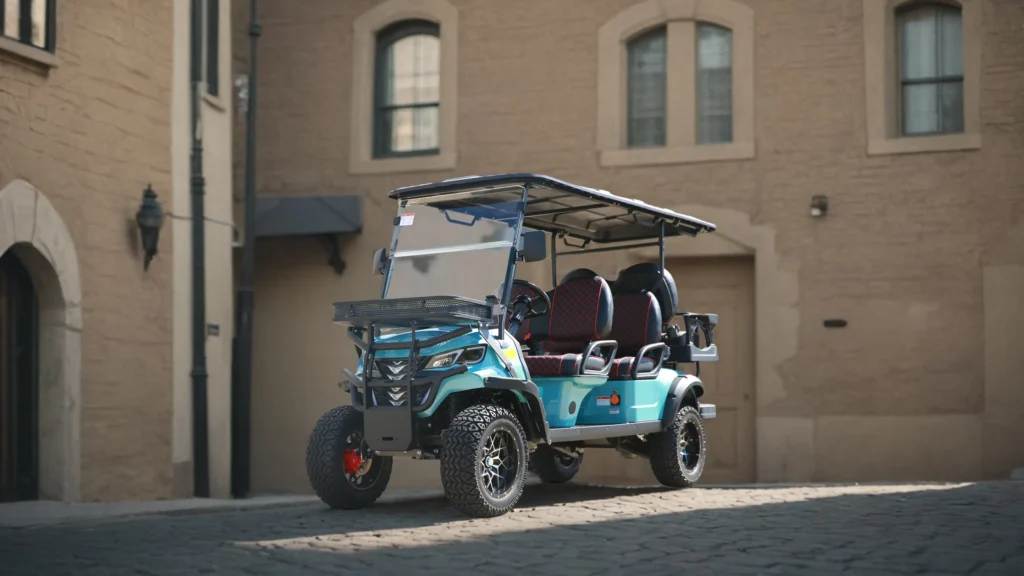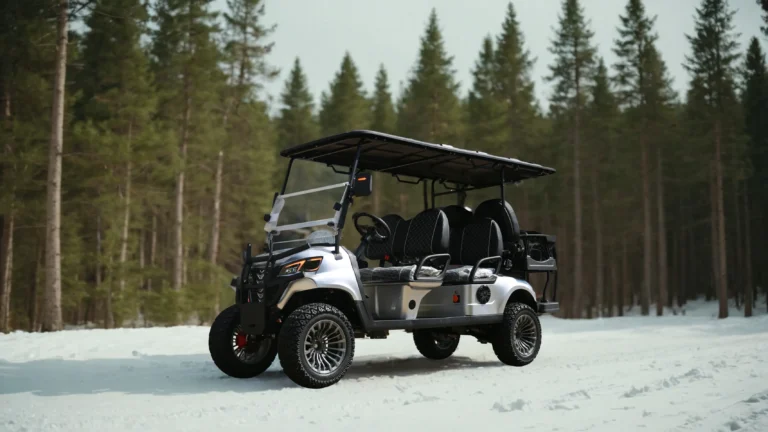Solar energy seems like a natural fit for electric vehicles, but you don’t see many golf carts with solar panels. Why not? This is a question that many people have, especially those who are interested in green energy and sustainable vehicles. The idea of a solar-powered golf cart is an attractive one, but the fact that they aren’t more common suggests that there are some significant challenges. Let’s look at the technical, economic, and practical reasons why solar-powered golf carts are so rare.
Golf carts are not typically solar-powered because of technical limitations, high costs, and environmental constraints. Solar panels on small vehicles like golf carts have a hard time with efficiency, energy output, and cost, which makes them impractical for most people.

There are several challenges to having a golf cart that is powered only by solar energy. Let’s look at the technical, economic, and practical reasons why this is the case.
Can You Run a Golf Cart on Solar Panels?
It seems like a great idea to run a golf cart on solar power, but is it practical? Can you use solar panels to charge your golf cart and never have to worry about plugging it in?
While it’s possible to use solar panels to help charge your golf cart, it’s not practical to use them as your only power source. Solar panels can help charge the batteries on your golf cart, but they don’t produce enough energy to power the cart for an entire day. Solar panels can be a great way to extend the life of your batteries, but you’ll need to rely on traditional charging methods to keep your cart running.
Why Do They Not Put Solar Panels on Electric Cars (and Golf Carts)?
While solar power is promoted for homes and large-scale facilities, it’s not as common to see it used for smaller vehicles. Why is that? The reasons are related to energy efficiency, practicality, and the limitations of the technology.

Electric cars and golf carts don’t typically have solar panels because they don’t have enough space for the panels, the energy conversion rates are too low, and it’s too difficult to integrate the panels. The panels required to generate enough power would need to cover a much larger surface area than is available on these vehicles, making them impractical for the energy needs of the vehicle. In addition, the added weight and cost of the solar panels often outweigh the energy benefits.
Economic Factors and Feasibility
Even if solar technology becomes viable, can it be economically justified for golf cart manufacturers and consumers? Buyers are very cost-conscious, and manufacturers must balance features with profitability. Analyzing the cost implications of integrating solar panels is essential.
The cost of solar panels and integration drives up the overall price of golf carts, making them less competitive in the market. Solar panels, along with their required energy management systems, are expensive, and this additional cost is a deterrent for both manufacturers and consumers looking for affordable options. The investment often does not translate to significant energy savings or operational benefits, reducing their appeal in an already cost-sensitive industry.
Real-World Usage and Environmental Constraints
Even with advancements, practical use scenarios may limit solar power’s effectiveness in golf carts. Golf carts often operate under diverse conditions, such as shaded paths, or cloudy days, where solar panels may struggle to perform. Evaluating the environmental limitations helps explain the slow adoption rate.

The variability of sunlight poses a significant challenge to using solar panels effectively. Unlike residential solar installations, golf carts move through shaded areas, such as trees on a golf course, and may not receive consistent sunlight. This reduces the effectiveness of solar power, which relies heavily on uninterrupted exposure to generate sufficient energy.
Alternative Solutions and Future Directions
If solar energy remains challenging, what other clean energy solutions exist for golf carts? Customers and manufacturers seek sustainable alternatives that align with eco-friendly goals without compromising reliability. Highlighting the potential of new battery technologies and hybrid systems is important.
Current advancements in lithium-ion batteries and potential hybrid energy solutions offer better alternatives for sustainable golf carts. Lithium batteries, known for their high efficiency and reliability, present a practical option for electric golf carts. Future technologies, such as enhanced solar panels or hybrid systems combining solar and plug-in charging, could make solar power more feasible.
Conclusion
Solar power for golf carts, while appealing in theory, faces technical, economic, and environmental hurdles. With continuous improvements in solar and battery technology, future golf carts may integrate solar power more effectively, but for now, practical limitations keep this option from becoming mainstream.




